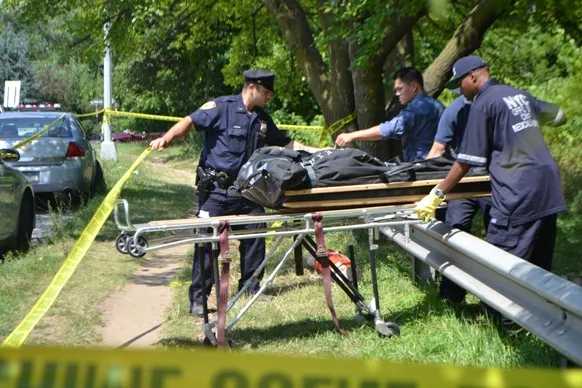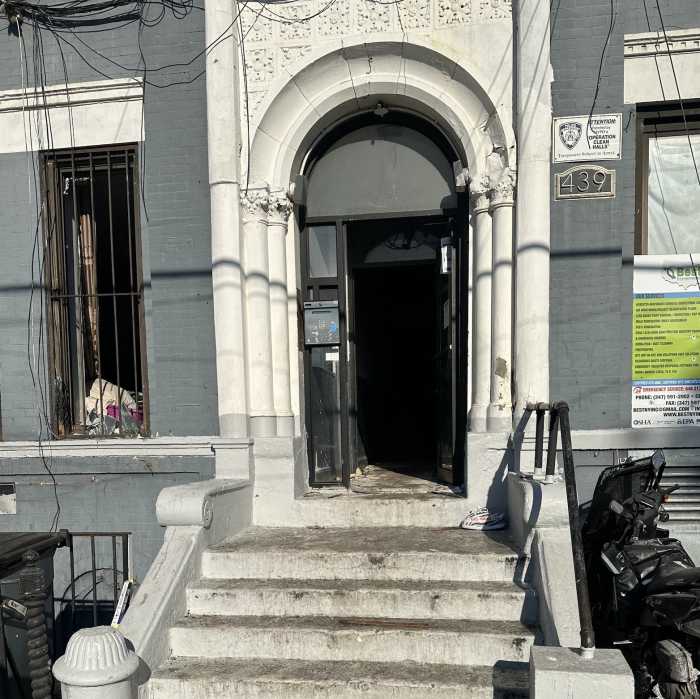The MTA has restored its live Twitter alerts for transit service after Elon Musk backed off a demand for payment to automate posts.
The transit agency had yanked its automated alerts for subway, bus, and commuter rail service from Twitter last week after the social media platform reportedly demanded $50,000 per month for the ability to access the application programming interface (API), which had previously been free. The API is essentially a tool for web developers to build programs that communicate and work with larger platforms like Twitter, and a requirement for agencies like the MTA to automate posts.
The fiscally-beleaguered MTA refused to pay to post the service advisories and opted instead to discontinue them, pointing riders instead to its website, apps, station screens, and messaging services.
On Tuesday, amid much public criticism, Twitter did an about-face and declared that government agencies like the MTA can access the API for free to post public service alerts.
“One of the most important use cases for the Twitter API has always been public utility,” Twitter’s development team tweeted. “Verified gov or publicly owned services who tweet weather alerts, transport updates and emergency notifications may use the API, for these critical purposes, for free.”
The MTA announced soon afterward it was considering restoring the alerts on its accounts, including its 1-million-follower subway alerts feed. On Thursday, the MTA’s acting Chief Customer Officer, Shanifah Rieara, made it official, bringing the alerts back online at exactly 4 p.m., following this story’s initial publication.
We're baaaaack!
No kidding! 🐐🐐 https://t.co/F8iwhQSwPQ
— NYCT Subway (@NYCTSubway) May 4, 2023
“The MTA informed Twitter senior management that it would not pay to provide the public with critical service information,” said Rieara. “Twitter got the message and reversed its plan to charge the MTA more than half a million dollars per year for these alerts, so now no transit agency will need to pay. The MTA also received written assurances from Twitter that reliability on the platform will be guaranteed through technological means, so riders can count on receiving messages posted on Twitter. As a result, the MTA will resume providing service alerts on its Twitter accounts.”
Rieara also noted that riders can still get service advisories on its website, apps, and through email and text messages, and said that riders had taken advantage of those services during the brief Twitter interregnum.
Meanwhile, Twitter’s active community of railfans stepped up in the interim to ensure riders get the information they need. Will Davis, a self-described “guerrilla urbanist” and “transit enthusiast/s**tposter,” launched @MTA_Alerts_Bot, which automatically posts subway service alerts just like the @NYCTSubway account.
The software engineer, who lived in New York but recently moved back to his native Texas, mainly tweets from the account @YIMBYLAND.
Davis told amNewYork Metro that he dug into the code and learned all the data used for the alerts was open source and posted to the General Transit Feed Specification (GTFS), a web “standard” where transit agencies upload real-time data on their systems. Besides Twitter alerts, GTFS is also used to provide service information within Google Maps.
“Google created it so it would be easy for any transit organization out there, as long as they stuck to the standard, they could integrate with Google services,” Davis said in an interview, noting the MTA is “great” with open source data. “So, like Google Maps, all the Google transit integrations they have in Google Maps that are really slick and work nicely, it’s because [San Francisco’s] BART and the MTA and the CTA in Chicago all use, and therefore abide by, this GTFS. Pretty interesting little thing!”
After learning that, it didn’t take long for Davis, who was a regular subway commuter when he lived in New York, to figure out how to make his own live alerts bot. “Not super hard,” Davis said. “It just took like an hour.”
Musk — the world’s second-richest man, who bought Twitter last year for $44 billion — had introduced a new pricing scheme for API access that would be free for small amounts of posts, $100 for up to 50,000 posts per month, and variable “enterprise” pricing for large organizations that can run tens of thousands of dollars per month, though Musk had also said bots creating “good content” could post for free.
Northbound [2][3][4][5] trains are running with delays after FDNY extinguished a track fire between Franklin Av and Atlantic Av-Barclays Ctr.
— MTA Service Alerts (@MTA_subway_bot) May 4, 2023
Davis opted to pay the $100 to build his bot, saying he could afford to pay for what he characterized as a donation to the people of New York.
“It’s not insignificant,” he said. “But it’s something that I can foot and it definitely provides more than $100 of value to New Yorkers.”
The bot still has just 298 followers as of Thursday afternoon, but Davis says it is “perfectly scalable from 100 followers to a million followers.”
Davis cautioned that his bot is just a “lightweight version” of the MTA’s account and not a replacement. For one, he does not monitor it 24/7 and does not manually answer riders’ questions like the MTA, instead just letting the bot post automatically. He also has only made a version for subway alerts, not for bus and commuter rail.
And since he is technically limited in the amount of tweets he can post monthly, the bot could theoretically be kneecapped from posting after reaching its cap. Furthermore, the bot is not subject to the same level of scrutiny as the MTA account.
“The MTA as a governmental organization wants to have things locked down. So, let’s say there’s some intermittency with the API or something like that, or one day they’re tweeting out a ton of tweets and they reach their max tweet limit, and it goes down. Well the MTA, there’s political fallout from that,” said Davis. “Whereas for me, it’s no skin off my back. Maybe someone gets mad on Twitter, is like ‘yo what the heck, why is the service down,’ and then I can tweet ‘oh sorry, ran out of tweets for the day, it’ll be back up in an hour or something.’ There’s a little bit more leeway with a sovereign citizen versus a governmental organization.”
The MTA declined to comment on Davis’ bot.
This story was updated following publication at 4:30 p.m. on May 4, after the MTA announced it would restore its live Twitter alerts. Asked for comment on his bot being made obsolete, Will Davis said “I love it.”






































